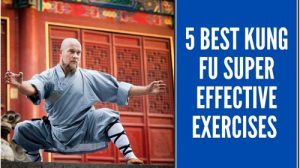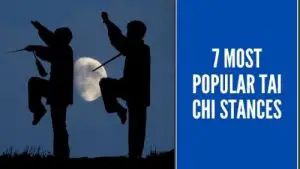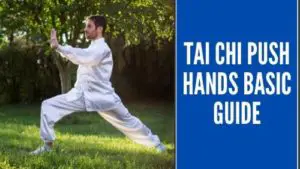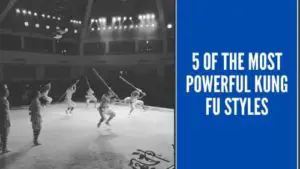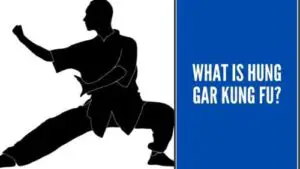Wudang tai chi is a form of martial arts originates from China, and folklore has it that it arose from Wudang mountain, which now is a cultural heritage. The mount is known to be the center of Taoist culture, which focuses on various martial concepts such as Yin-Yang and Confucianism. The Chinese culture of Taoism is based on the writings of Lao-tzu and has been passed down many generations as it advocates for humility and religious piety.
Yin-Yang, on the other hand, is the concept of two halves that bring completeness such as the light and darkness, male and female, moon and the sun. Chinese culture is inclined to these two concepts, among other traditional ideas such a Kung Fu.
History of Wudang Tai Chi
Mr. Zhang Sanfeng is thought to be the founder of “Wudang tai chi”. It is said that he approached up the notion after numerous studies of Taoism culture. Around 1368 Zhang recruited members, and historians say that he created new martial arts using fists only. The idea of tai chi follows the spirit of triumphantly unyielding with the yielding. It also supports the concept of remaining motionless to conquer all the motions from our environment.
Over the years, there have been several branches of tai chi, but the original practices have evolved over the years. The methods focus on health such that the participants focus on eliminating physical and mental stress as a move to increase self-defense. The tai chi meditation focuses on calmness for maintaining optimum health.
Zhang, in his tai chi practices, hoped that he could attain immortality by connecting to Mother Nature through meditation. Zhang trained his mind to control the waist and, ultimately, the whole body, in his exercises, he secluded himself in the Wudang forest and monasteries.
Related: 5 of the Most Powerful Kung Fu Styles
Wudang Tai Chi Primary Forms
Peng
Peng is the first energy described as rising and expanding energy. It warms up an individual and can be compared to air fill in a balloon that pushes towards all directions. It is like this form acts as a warm-up for the proceeding martial arts acts.
Lu rollback
Lu form of martial arts is a way of turning away from external forces and diverting bad energies from you. Lu is a way of getting away from external energies.
Chi (press)
Chi move is a life force that brings harmony to an individual’s spirit and energy. Chi is a spiritual force that calms the body and soul. Through this art, Zhang believed that he could connect with nature and hoped that he could attain immortality. This move is beneficial for people practicing “Wudang tai chi” as it is a force that connects the body, spirit, and soul.
An (push)
In tai chi is a two-person activity that involves people facing each other and pushing each other by the hands. The form of tai chi teaches people for kind of energies to listen, understand, neutralize, and issue. One can quickly learn how to follow orders in this move, and it enables training and learning, thus it is useful in sharpening the cognitive and motor skills in an individual.
Tsai (pull-down)
Tsai form of martial arts means to pick up and pluck and is performed on the posture of a needle at the sea bottom. The form allows the defender to tackle incoming forces in a downward arch. When the face is facing the floor, one can learn the movement of the enemy, which is critical in tackling them.
Lieh (split)
Split energy is the opposite of pull-down and combines two yang energies press-forward and ward-off. The person turns the waist, and the two energies do not meet but move to different directions from a common point. One through this force can attack the enemy from more than one direction. For instance, a person can move their arms and hands in different directions, and one hand can remain fixed in space while the other moves in a different direction, therefore, attacking the enemy effectively.
Chou (elbow strike)
Chou form of art uses the elbow to strike instead of the arms, although there are instances when the hand is engaged. This move is used on the enemy that has made the first move before you make a move. By using the strength of the opponent against him, you can alter their vector by striking with an elbow.
Kao (shoulder strike)
Kao energy uses the shoulder alone without necessarily involving the back, the shoulder that it almost touches the ground with the distance between the face and the knee being about 20cm. When the opponent strikes by the front, then one can defend themselves by striking with the right foot, especially between the feet of the opponent. The whole body should work as an integrated unit for it to use the shoulder to exert the force on the opponent.
Chin (advance)
Chin is the ability to seize and control the enemy, overpowering them in a way that they face down with their chin on the ground. When you pin the enemy to the ground, it is difficult for them to retaliate back, and thus, you will have victory.
Tui (retreat)
Tui is a move that a person retreats, they withdraw from the fight and cancel their blows on the enemy to strategize on their next step. Fighting external forces require tactics, and you can gain this by pulling back and calculating a move that overpowers them.
Ku (look left)
Ku is a move that one plays by striking the left but, at the same time paying attention to the right to avoid unexpected blows.
Pan (look right)
Pan is the overt force, where one turns to the right at 90 degrees when the enemy attacks from the left so that they can learn their next move.
Ting (center)
Ting form of art emphasizes the importance of a good posture to develop a strong sense of center that makes it easier to do other movements. The center of an individual begins from the head to the acupuncture point and enables one to control the legs and the arms effectively.

